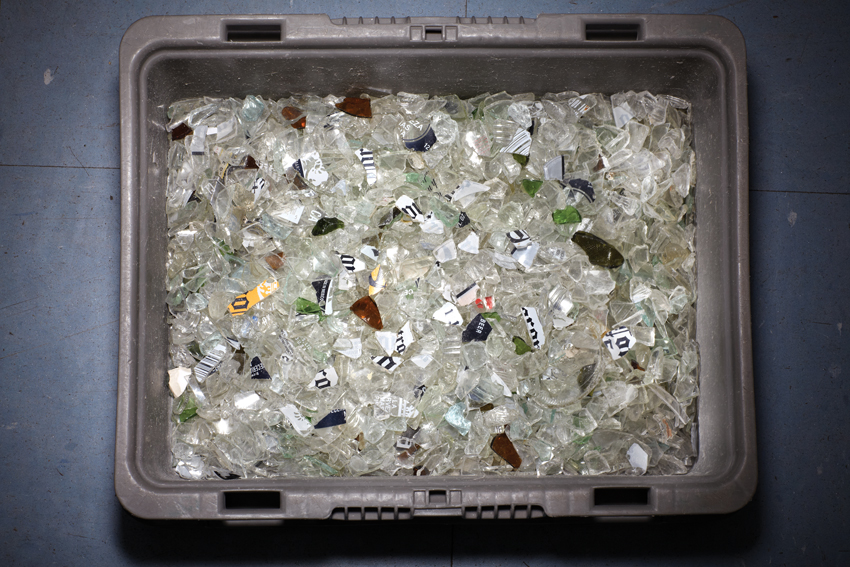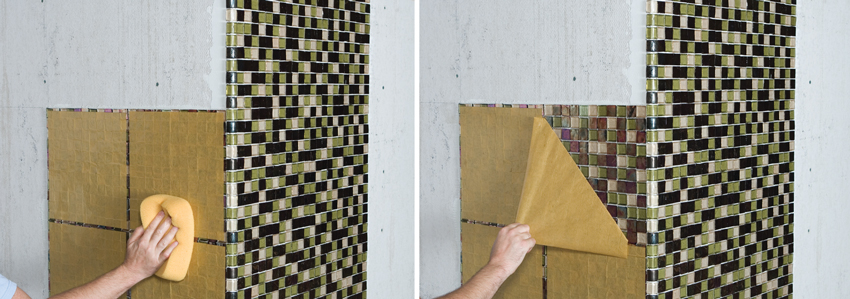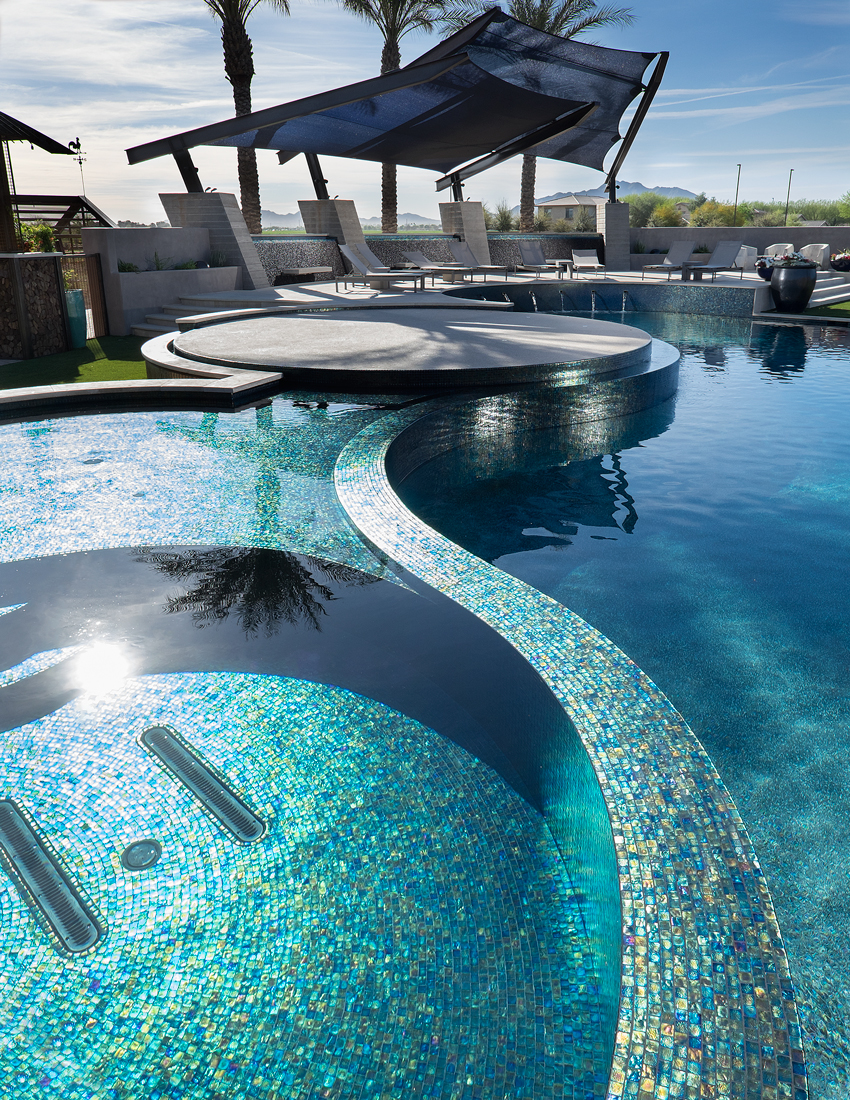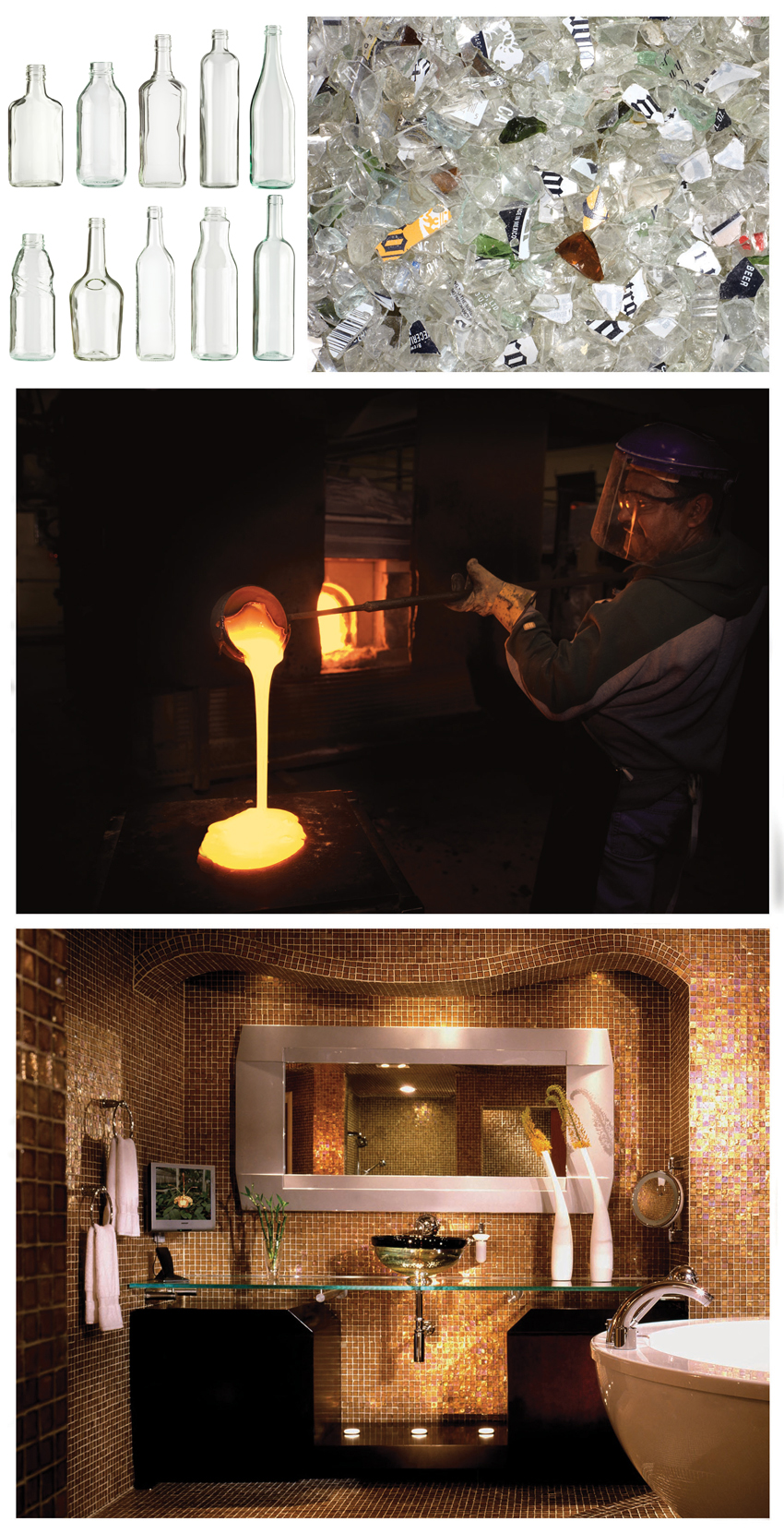Artisanry, Architecture, and North American Glass Tile

Photo courtesy of Oceanside Glasstile/Nick Nacca
Glass tile can be made with recycled bottle glass or other types of post-consumer and post-industrial recycled glass material. The manufacturer can detail how salvaged glass is obtained, sorted, and used.
Mounting Mosaics for Beauty, Longevity
There are several types of mounting methods for glass mosaics, and each has its own strengths and weaknesses. Sheeting, the use of mosaic tile prearranged and fixed on a paper, mesh, or film sheet, can be accomplished by hand or by machine. For the application of mosaics to sheets by hand, there are few limits on the possible sizes, colors, or patterns for the mosaic sheets. Trained mosaic sheeting artists also provide some quality controls that machines generally cannot offer. Unsurprisingly, machine sheeting can be fast and efficient when replicating a single size of sheet. However, machine capabilities tend to constrain the size, color, and pattern of the mosaics.
To mount the sheets, architects can specify mounting with mesh, a film face, or paper face. Because glass is impervious, full bonding with the thinset mortar is critical. Partial bonding or bonding to materials between other than the tile can impair long-term durability and may cause the tiles to fail.
Mesh mount allows the installer to visually check the tile during installation, and it is a relatively fast and easy application method favored by novice tile installers. On the other hand, the mesh may be visible behind installed translucent tile, leaving unexpected and undesirable grid lines behind the translucent mosaics. With mesh mount, the installer has limited time to make adjustments of the tile before setting, though cutting the sheets apart before installing would allow for additional adjustments. Another challenge is the bond, as the thinset bonds to the mesh. If the mosaic gets wet or the thinset is water soluble and compromised by moisture, the glass tiles may fail, for example by popping off the wall. Wetting of the mesh may also turn it to a black color visible through translucent tiles, unless it was treated with antimicrobials prior to mounting. TCNA does not allow mesh products for water installation, such as pools.

Photos courtesy of Oceanside Glasstile
Sheeting involves the use of mosaic tile prearranged and fixed on a paper, mesh, or film sheet in order to facilitate a proper and lasting installation. Sheeting is accomplished by machine or by hand; the former may constrain sizes and capabilities.
As opposed to the mesh on the back of the product, face-mounting using film or paper is recommended by many installers. For wet applications and pools, ANSI and TCNA recommend only the use of face-mounted mosaic products. As given in ANSI A137.2-2013: American National Standard Specifications for Glass Tile, “Face-mounting of mosaics to a sheet allows bonding to the back of the tile without interference from any mesh, glue, or other material used with back-mounted or edge-mounted mosaics. For submerged and exterior applications, face-mounted materials are recommended.”4
Film Face-Mounting
Film face-mounting employs a transparent film sheet to provide full bonding of the tile backs to the thinset mortar, using only a direct bond-setting method. In this approach, the installer can also see the tile while installing the mosaic; after the tile is properly set, the film is removed. The adhesive film limits adjustment by the installer, however, who also can’t easily remove thinset from the grout joints.
Paper Face-Mounting
Paper face-mounting contrasts with film application in several important ways. Similar to film, the paper sheets allow a 100 percent bond to back of tile, yet they also provide for a high degree of adjustability. The paper holds the tile in place with water-soluble glue and is removed by wetting the sheets before the thinset fully cures, allowing for an adjustable and seamlesss installation. Direct bonding may be utilized, but an alternate setting method is also possible. The installer also has the option to remount the sheets, if needed, and the paper sheets make it easier to negotiate radius conditions and other curving shapes.

Photo by Michael Woodall, courtesy of Oceanside Glasstile
Hand installation with paper sheeting is considered the premium mounting method for reasonably experienced installers, who follow TCNA recommended guidelines.
Hand installation with paper sheeting is considered the premium mounting method for reasonably experienced installers. But it has a steep learning curve so the subcontractors and installers must adhere to TCNA recommended guidelines. A few extra steps may be needed to assure a high-quality installation—but on the plus side, the highest-quality installation possible can be achieved using this method.










